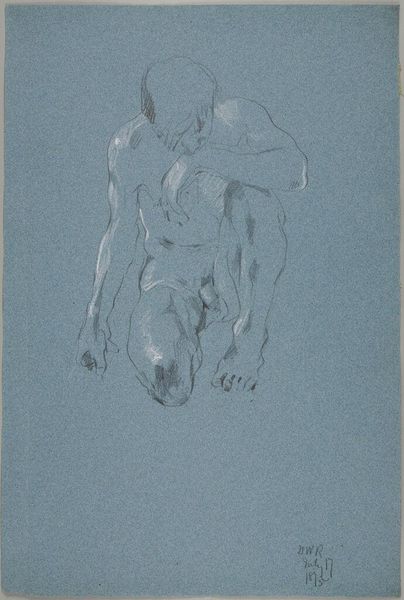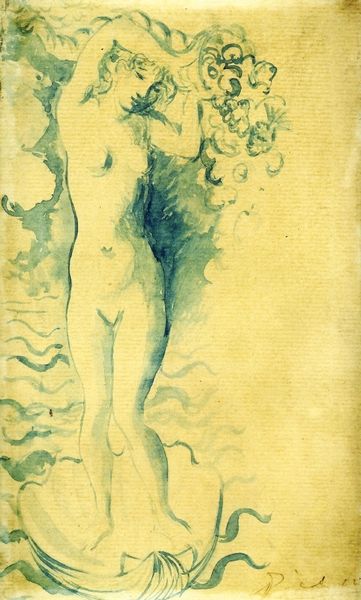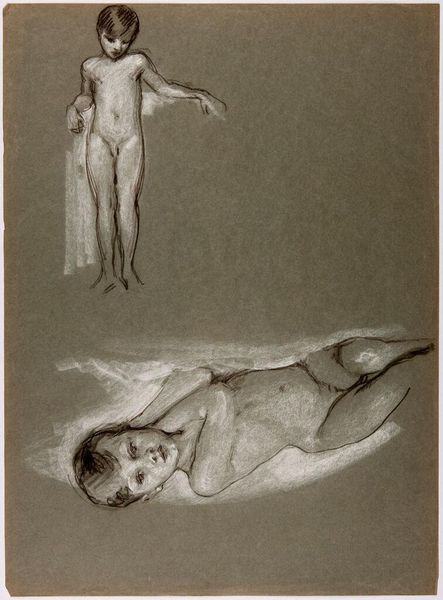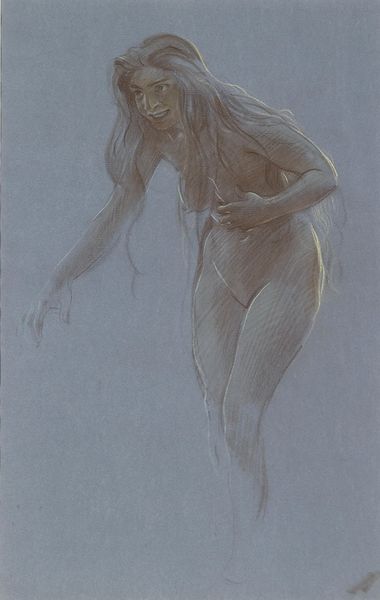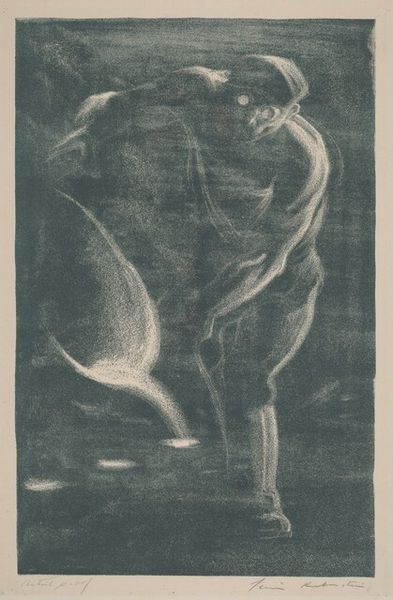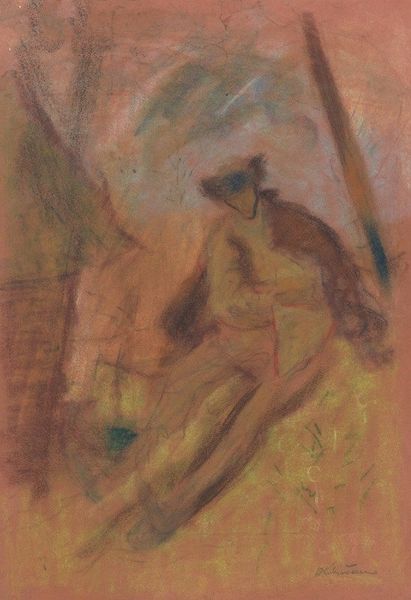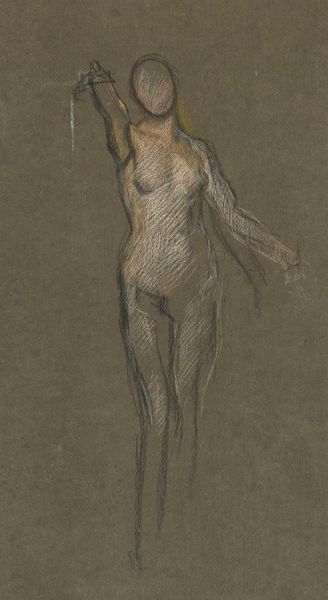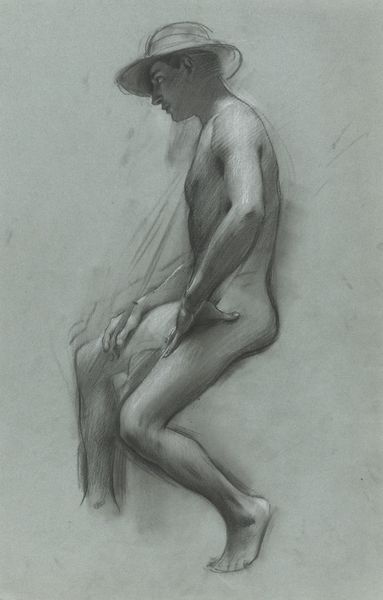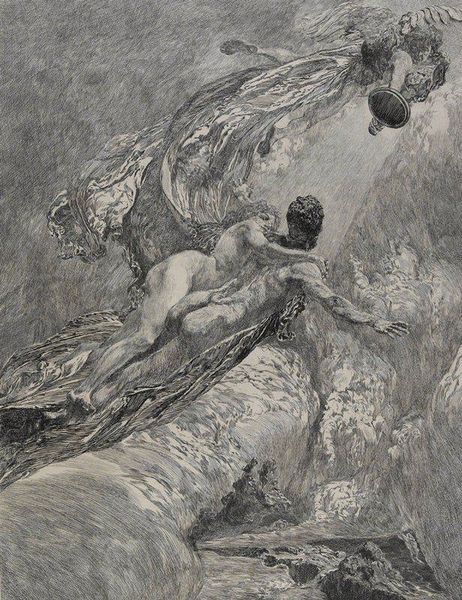
drawing, pencil
#
portrait
#
drawing
#
neoclacissism
#
figuration
#
form
#
pastel chalk drawing
#
pencil
#
line
#
academic-art
#
nude
Copyright: Public Domain: Artvee
Editor: Here we have Pierre-Paul Prud'hon’s “Study of a Male Nude,” circa 1810, executed in pencil and pastel chalk. The muted palette creates an ethereal feeling. What strikes you about this work? Curator: I’m immediately drawn to the material process. Notice how the hatching marks don't just define form, but speak to the very act of repetitive mark-making. Consider the socio-economic conditions that enabled the mass production of pencils and chalk at this time. Who had access to these materials, and what did their availability mean for artistic training and production? Editor: So, you’re less interested in the idealized form itself, and more in the nuts and bolts? Curator: Precisely. The idealized nude is a product of academic tradition, yes, but it’s the democratization of the means of production, cheap drawing materials for the masses to practice, to attempt such classic ideals that makes it interesting. Are we even considering the type of paper here? What mill produced it and its social, geographical and economic origins? These processes allow for that traditional form to even be conceptualized. Editor: I hadn’t thought about it that way. How does the “academic” style relate to this? Curator: The Neoclassical style often emphasizes order and reason, drawing inspiration from classical antiquity. I would ask instead, "what allowed this reference to antiquity to be revitalized during the specific time? Who supplied what, when and why in the timeline of materials used, and socio economic setting that Prud'hon stood?" Editor: I’m beginning to understand how looking at the material conditions of its creation can change our entire understanding. Thanks! Curator: My pleasure! Examining the raw materials reshapes art-historical narrative!
Comments
No comments
Be the first to comment and join the conversation on the ultimate creative platform.
